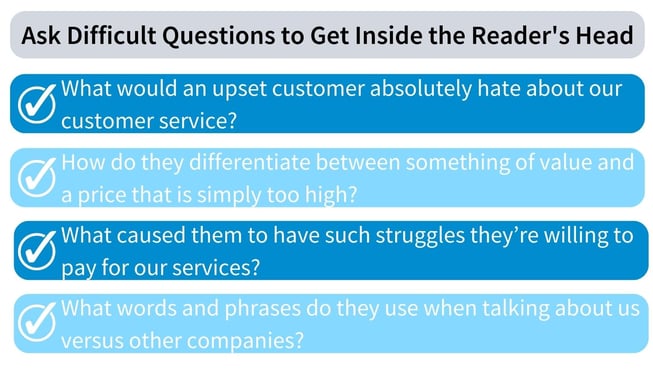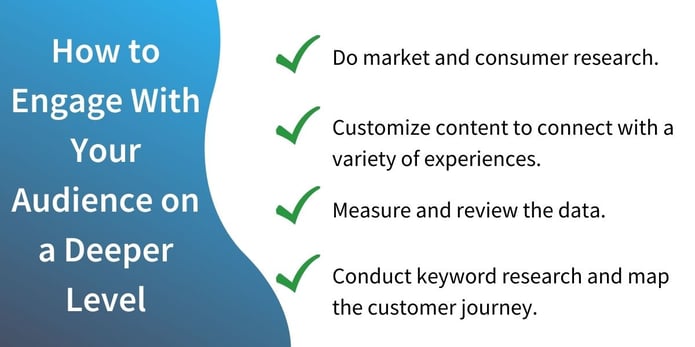How to Know What Customers Are Looking For: From Insights to Action
November 4, 2020 •DJ Team

Have you ever looked at another human being and wondered, “What is going on inside their head?” The idea of reading someone’s mind is certainly an alluring one; from science fiction to TV psychics, telepathy can seem like a far-fetched concept that we can only dream of. But what if it was possible? What if it wasn’t a matter of magic, but a sort of science?
Thanks to advanced analytic tools, comprehensive research practices, and maybe just a pinch of instinct and luck, knowing what customers want is no dream or fable. Let’s take a look at four approaches for getting inside the heads of your customers and how that knowledge can help to engage on a deeper level.
Market and Customer Research
One of the most valuable practices in identifying customer needs comes from the hours, weeks, and even years of relevant market and consumer research. For many companies, especially those just starting out, this process begins with understanding how your brand fits into the marketplace. You’re not looking for a chance to practice your investment pitch deck; market research should truly shine light on the people you wanted to help in the first place: customers. This can be done in a variety of ways, but one popular approach we’ve discussed before is with a competitor analysis. You can find more on this topic here.
While working on the customer side of the research, don’t settle for “Less is more.” When it comes to truly knowing what makes your customers tick, the fact is that “More is more.” It’s not enough to simply have understanding of the average age group, income level, or geographical needs of their home. You need to work on establishing their back stories. After reviewing research answers, try to ask yourself difficult questions like:
- What would an upset customer absolutely hate about our customer service?
- How do they differentiate between something of value and a price that is simply too high?
- What caused them to have such struggles that they’re willing to pay for our services?
- What words and phrases do they use when talking about us versus other companies?

Customize and Connect
Any marketer worth their weight in salt knows that the future of content marketing is in customization. A recent study by Salesforce found that 74% of customers feel frustration when reading website content that has not been customized to their needs. Creating content that speaks to individual problems and solutions that aren’t one size fits all, but all sizes, all fits, built just for one. Granted, it’s unlikely you’ll be able to write an individual blog post for every single customer, but you can still work to create a plethora of written and online content that speaks to a huge variety of experiences.
However, it’s not enough to only use blog content as a marketing magnet. To get the most out of your work and maximize your audience engagement, the content creation process needs to also be a way to examine and better understand the nuances of your readers. This happens through careful blog idea generation. This is a chance to get inside the head and hearts of your customers, to see what resonates and what falls flat. A great place to get started is by engaging with your fans and supporters on social media. Social channels are a great place to mine for blog topics and ways to optimize your existing content and ensure it is hitting all of their needs.
Measure Data and Review It
A company is nothing without their customer data. With so many advanced data analytic tools on the market, the more datasets you can provide to an AI solution, the more specific your results can get. So it follows that the more data you keep track of, the better equipped you’ll be to answer tough questions about how well your marketing strategy connects with what your customers want.
Audience behavior is an important reflection of customer needs. Though digital marketing often centers around how people find your content, there’s also valuable information that can be gleaned from their visits to your website. There are some helpful page metrics that you can use to articulate their experiences:
- Visitors: Measures how many people entered your site and looked around.
- Pageviews: Shows how many times an audience member accessed your content. High counts on this metric points to engaging content that the reader finds valuable.
- Average Session Duration: Measures how long a reader accesses your site for. Generally, longer sessions indicate more interest.
- Bounce Rate: This measures how often someone arrives at your page and then leaves without further interacting with your materials.
Whatever data you choose to use, think about those metrics not as a collection of numbers and percentages, but as a large-scale representation of your customers’ needs, wants, and frustrations.
Keyword Research and Journey Mapping
Finally we come to the cornerstone of the content marketing experience: keyword research. This is about more than ranking on the first page of Google; digging into keyword research helps to establish how people talk about your business. They may not be referring directly to your brand, but the right keyword research tool can help you to talk the talk and speak their language.
Think about the last few times you Googled something. Did you type in an industry-specific phrase, or did you ask a question? Sometimes a customer may not know that your product, let alone your business, even exists. All they know is that they have an issue they need to deal with. Let’s say you’re creating marketing content for a yoga studio. A good idea is to think about what problems yoga can solve. For instance, someone with chronic pain may be searching for “stretches for my back” or “chronic pain solutions.” By focusing on what the customers want instead of what you’re selling, it’s easier to use this information to generate more sincere and honest interactions.

Learn What Customers Want With DemandJump
At DemandJump, we know the importance of engaging customers at their level. Understanding what customers need and want becomes much easier with our dynamic platform. Our tools provide you with insights into customer behavior by analyzing customer behavior through the entire marketing funnel. Not only that, we’ve included cutting edge cross channel analytics that allows you to compare your marketing assets and ensure your strategy is running smoothly. Finally, you’ll find it can help you to engage more significantly with your customers with our content creation guides. Stop waiting for telepathy and start your Free Trial today!
Featured Articles
Categories
- Attribution Tracking (13)
- Channel Optimization (11)
- Consumer Insights (68)
- Content Marketing (251)
- Data Science (8)
- Digital Marketing (6)
- Digital Transformation (26)
- Enterprise (10)
- Lead Generation (14)
- Market Intelligence (8)
- Marketing Analytics (39)
- Marketing Attribution (57)
- Marketing Management (153)
- Marketing Operations (86)
- Organic Search (222)
- Paid Search (52)
- Pillar-Based Marketing (63)
- Programmatic Advertising (9)
- SaaS Content (14)
- SaaS Marketing (29)
- Search Marketing (111)
- SEO Keyword Research (28)
- SEO Pillar (18)
- SEO Strategy (46)
- SMB (5)
- Website Content (12)


